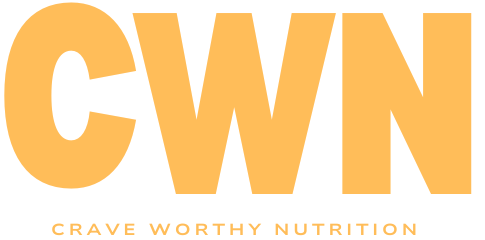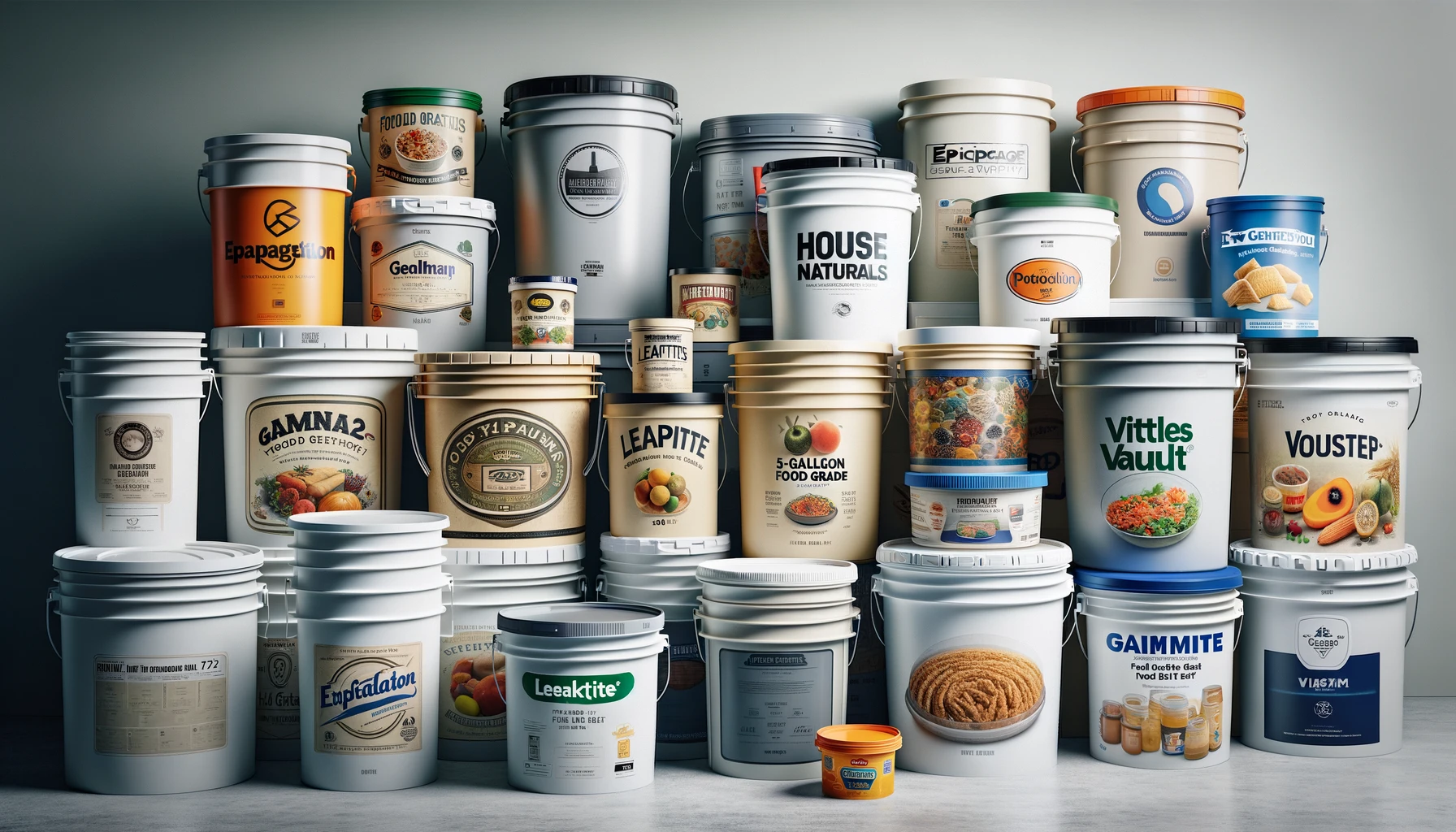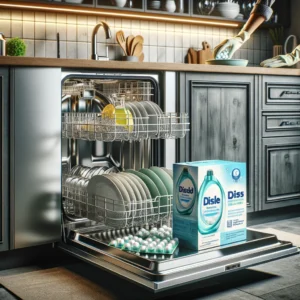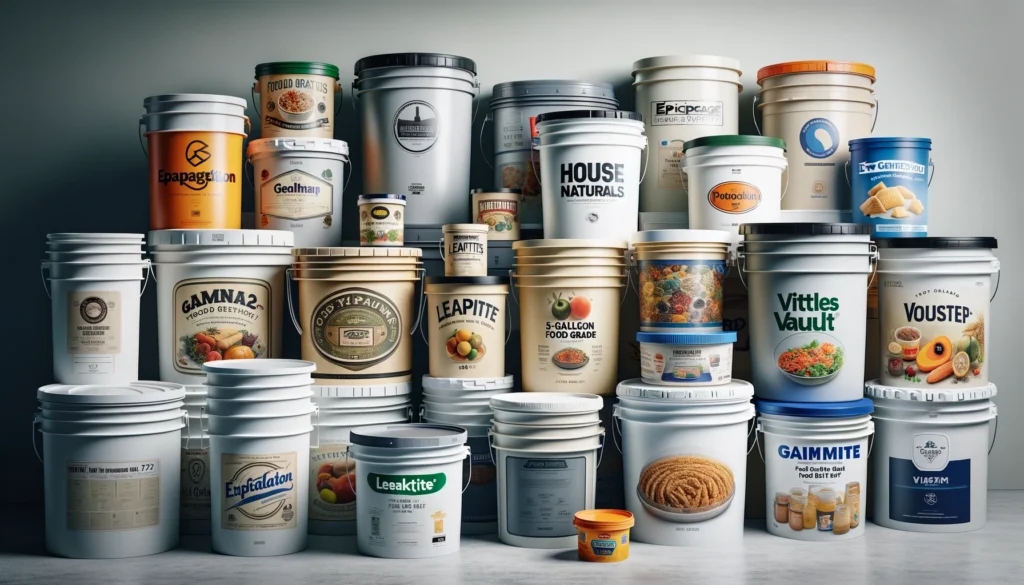
When it comes to storing and transporting food items, using the right containers is crucial to maintaining freshness and safety.
Food grade buckets are specifically designed to meet the stringent requirements of storing food products.
In this article, we will explore everything you need to know about food grade buckets, from understanding their characteristics to identifying them in the market and learning how to properly clean and maintain them.
Understanding What Makes a Bucket “Food Grade”
The distinction between a regular bucket and one that is deemed “food grade” lies primarily in the materials used in its construction.
For a bucket to be classified as suitable for food storage, it must be crafted from materials that are deemed safe for direct contact with food.
This means the plastic must not only be strong and durable but also free of harmful chemicals that could potentially leach into the food product.
High-density polyethylene (HDPE) is the standard for these types of buckets due to its robustness and chemical resistance, ensuring that the container will not impart any toxic substances into the food it holds.
Additionally, these buckets are manufactured to withstand significant temperature ranges, making them versatile for various food storage scenarios, from pantry staples to perishable goods stored in cooler environments.
The process to certify a bucket as food grade involves rigorous testing to meet specific standards set by regulatory bodies, confirming that the bucket is indeed safe for food contact.
This includes checks for BPA (Bisphenol A), a chemical commonly found in plastics that can disrupt normal hormone functions.
Food grade buckets are explicitly made to be BPA-free, eliminating concerns over food safety and chemical contamination.
Understanding the attributes that qualify a bucket for food grade status helps in making informed choices about food storage solutions.
It’s not just about the bucket’s physical toughness but its chemical composition and how it interacts with the food it contains.
Ensuring the safety and integrity of food, these buckets are designed with both durability and health considerations in mind, embodying the necessary precautions for reliable food storage.
The Importance of Using Food Grade Buckets for Storage
Opting for food grade buckets when it comes to storing food goes beyond the basic need for containment.
Construction Materials
These specialized buckets are engineered to provide a secure and chemically inert environment for food, ensuring that no undesirable substances make their way into what we consume.
The materials used in the construction of food grade buckets do not contain the harmful chemicals found in non-food grade plastics, which can migrate into food and potentially cause health issues.
This is particularly vital when considering the storage of acidic or fatty foods, which are more susceptible to absorbing these harmful substances.
Seals
Moreover, the airtight and watertight seals of food grade buckets offer an added layer of protection against external contaminants, such as pests, moisture, and airborne pollutants, all of which can spoil food and reduce its shelf life.
This is especially crucial in environments where food is stored for extended periods or in large quantities, such as in pantries, commercial kitchens, or during transport.
Design
The design of food grade buckets also takes into account the practical aspects of food storage, including ease of use, stackability, and space efficiency.
These factors contribute to maintaining an organized and sanitary storage area, reducing the risk of cross-contamination among different food products.
In essence, the use of food grade buckets is a proactive measure towards safeguarding health, preserving the quality and freshness of food, and ensuring that storage practices meet safety standards.
By prioritizing food grade options, individuals and businesses can maintain the highest level of food safety and quality control in their storage practices.
Identifying Food Grade Buckets

To ensure you’re selecting the appropriate container for your food storage needs, it’s crucial to know how to identify food grade buckets.
These special buckets will often bear specific symbols or markings that indicate they are suitable for food storage.
” Food Grade” Label or HDPE
Common indicators include a “food grade” label or the initials “HDPE” which stands for High-Density Polyethylene, the material deemed safe for direct contact with food.
Fork and Cub Symbol
Another reliable identifier is the presence of a fork and cup symbol, universally recognized as safe for food use.
Recycling Symbol
Additionally, a critical look at the recycling symbol can provide valuable insights.
Food grade buckets typically have the recycling number “2” within the symbol, which confirms the bucket is made from HDPE.
This detail is not just a technicality but a reassurance of the container’s safety for storing consumables.
Check with Manufacturer or Retailer
However, it’s important not to solely rely on these markings. It’s advisable to verify the bucket’s food grade status with the manufacturer or retailer.
This is particularly important if the bucket is repurposed or lacks clear labeling.
Ensuring the bucket has not previously been used to store non-food items is another crucial step, as contaminants can linger in the material and potentially leach into food.
By familiarizing yourself with these identifiers and taking the necessary precautions, you can confidently select buckets that will keep your food safe and uncontaminated.
Remember, the right food grade bucket is an invaluable tool in maintaining the integrity and safety of your food storage endeavors.
Top Food Grade Buckets in The Market
Navigating the selection of food grade buckets available in the market can be overwhelming given the vast array of options.
However, a few standout brands have earned their reputation for quality, durability, and safety, making them favorites among consumers.
Gamma2, Encore Plastics, and Vestil are some of the leading names in this category.
Each of these brands offers food grade buckets that are designed with the end-user in mind, featuring ergonomic handles for easy lifting and carrying, as well as secure lids that ensure an airtight seal to keep food fresh longer.
Gamma2
Gamma2 is renowned for their Vittles Vault containers, which are specifically designed for pet food storage but are versatile enough for general food storage needs.
These containers are known for their airtight seals and durability, making them an excellent choice for preserving freshness.
Encore Plastics
Encore Plastics offers a range of food grade buckets that are popular in both residential and commercial settings, thanks to their sturdy construction and ease of use.
Vestil’s buckets
Vestil’s buckets are favored for their industrial strength and variety of sizes, accommodating a wide range of storage needs from small quantities to bulk items.
When selecting a food grade bucket, it’s essential to consider not just the brand but the specific features that suit your storage needs.
Whether it’s a particular size, the type of lid, or the bucket’s material thickness, these factors can greatly influence the bucket’s functionality and efficiency in food storage applications.
Additionally, exploring the product offerings from these top brands can provide insights into innovative storage solutions that may enhance your food preservation practices.
Let’s explore a few of the top rated food grade buckets in the market today:
House Naturals 5-Gallon Food Grade Buckets
These buckets are BPA-free and come with screw lids that provide a tight seal, making them ideal for long-term food storage. They are also stackable, which is useful for maximizing storage space.
Material: Made from BPA-free plastic, ensuring no harmful chemicals leach into your food.
Seal Type: Features screw lids that provide a tight seal, keeping your food fresh and protected from contaminants.
Stackable: Designed to be stackable, making it efficient for maximizing storage space.
Durability: Highly durable, suitable for long-term use and capable of withstanding heavy loads without breaking.
Ease of Use: The screw lids are easy to open and close, adding to the convenience of accessing stored food.
Rating: 4.5/5
Gamma2 Vittles Vault
Originally marketed for pet food, these containers are also excellent for human food storage. They come with a screw-on lid that ensures an airtight seal, helping to keep food fresh and safe from pests
Material: Constructed from BPA-free, high-density polyethylene (HDPE) for added safety and durability.
Seal Type: Equipped with an airtight screw-on lid that ensures a secure seal, maintaining the freshness and quality of stored food.
Stackable: Not designed to be stackable, focusing more on individual storage solutions.
Durability: Extremely durable, designed for long-term storage without degradation.
Ease of Use: The screw-on lid provides easy access to the contents, making it user-friendly.
Rating: 4.7/5
ePackageSupply 5-Gallon Plastic Bucket with Airtight Lid
Made from high-grade HDPE plastic, these buckets are both BPA-free and durable. They feature an airtight lid that helps keep food free from moisture and contaminants. Additionally, they come with a metal handle with a molded grip for easy transportation
Material: Crafted from high-grade HDPE plastic, which is BPA-free, ensuring safe storage of food items.
Seal Type: Features an airtight lid that creates a secure seal, protecting food from moisture and contaminants.
Stackable: Yes, the design allows for easy stacking, optimizing storage space.
Durability: Very high durability, capable of handling heavy loads without cracking or warping.
Ease of Use: Comes with a metal handle with a molded grip, making it easy to transport even when full.
Rating: 4.8/5
Leaktite 5-Gallon 70mil Food Safe Bucket:
These buckets are made with FDA-approved material and are designed for both home and work use. They are durable and come with a carry handle, making them convenient for transporting food and other materials
Material: Made with FDA-approved plastic, ensuring it is safe for food transport and storage.
Seal Type: Uses a standard lid, which can be enhanced with additional sealing methods for improved protection.
Stackable: Yes, designed to be stackable, aiding in efficient storage solutions.
Durability: Good durability, suitable for both home and work use, though not as robust as some other options.
Ease of Use: Features a carry handle, making it convenient to transport and handle.
Rating: 4.2/5
New Generation Food Grade Plastic Buckets
These buckets are made from high-density polyethylene (HDPE) and are designed to resist corrosion from moisture or acidity. They are ideal for storing a variety of dry foods and liquids and have a long lifespan, reducing the risk of contamination.
Material: Constructed from high-density polyethylene (HDPE), ensuring resistance to moisture and acidic conditions.
Seal Type: Can be tightly sealed with a good quality sealer, ensuring contents remain fresh and uncontaminated.
Stackable: Designed to be stackable, facilitating efficient use of storage space.
Durability: Very high durability, capable of lasting for years without breaking or cracking, reducing contamination risks.
Ease of Use: Versatile design makes it suitable for storing various types of food and liquids, ensuring flexibility in usage.
Rating: 4.6/5
These ratings reflect the overall performance of each bucket based on durability, ease of use, seal quality, and material safety.
Each bucket is highly recommended for different food storage needs, ensuring the safety and freshness of stored items.
The Variety of Uses for Food Grade Buckets
Food grade buckets boast a versatility that extends far beyond just the storage of dry pantry staples or perishables.
Their robust design allows for a multitude of creative and practical applications. In the kitchen, these buckets can be used for brining meats or fermenting foods, such as sauerkraut and pickles, thanks to their airtight seals that create an ideal environment for such processes.
Homebrewers find them indispensable for brewing beer or wine, as the material does not react with the acids in the brew, ensuring a pure taste.
Beyond the culinary realm, food grade buckets serve well in emergency preparedness kits as containers for storing water, rice, beans, and other essentials, safeguarding against contamination and spoilage.
Gardeners appreciate their utility as portable and durable containers for composting or as makeshift planters. For those into crafting or DIY projects, these buckets can organize supplies or mix large quantities of materials like paint or plaster.
The key to their wide-ranging use is the inherent safety of the materials from which they are made, ensuring that whatever they contain remains free from harmful chemicals, making them a go-to choice for anyone prioritizing purity and safety in their storage solutions.
Tips for Cleaning and Maintaining Food Grade Buckets
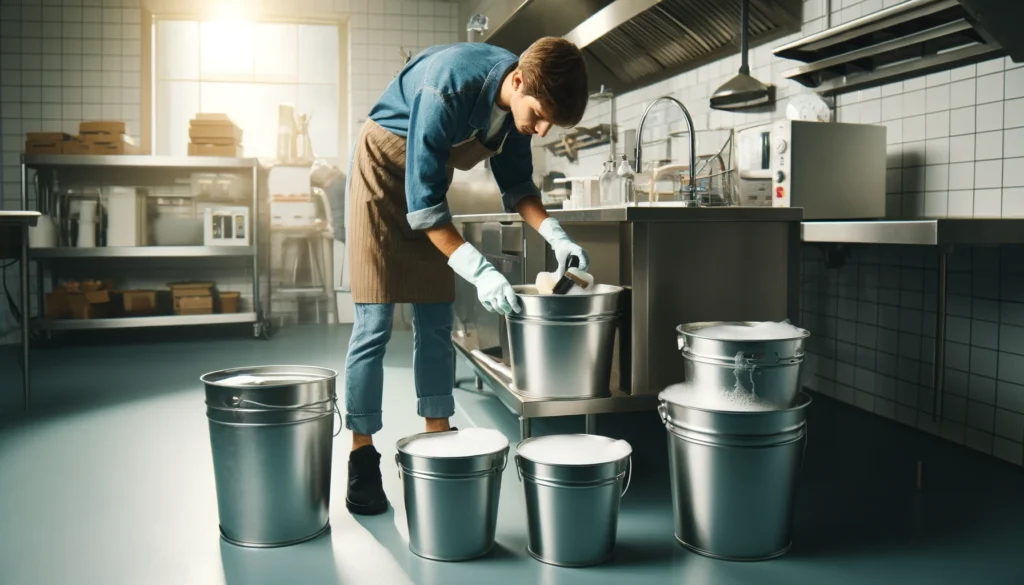
Keeping your food grade buckets in optimal condition is essential for long-term storage and food safety. To clean these buckets, start by rinsing them with warm water to remove any residual food particles.
Mild Detergent and Soft Bristled Brush
For a deeper clean, use a mild detergent and a soft-bristled brush to gently scrub the interior and exterior surfaces.
Avoid using abrasive cleaners or pads, as these can damage the bucket’s surface, potentially creating niches for bacteria to grow.
Rinse Thoroughly
After washing, rinse the buckets thoroughly with clean water to ensure no soap residue is left behind.
Disinfect
For disinfecting, a solution of bleach and water (1 tablespoon of bleach per gallon of water) can be used; make sure to rinse the buckets well after this step to remove any bleach residue.
Air Dry
Air drying is recommended to prevent moisture buildup, which can lead to mold or mildew.
Inspect Regularly
Additionally, inspect your buckets regularly for any signs of wear or damage, such as cracks or deep scratches, as these can compromise the bucket’s integrity and safety for food storage.
Proper Maintenance and Storage
Proper maintenance not only extends the life of your food grade buckets but also helps in maintaining a safe and sanitary storage environment for your food items.
Creative Ways to Repurpose Food Grade Buckets
The adaptability of food grade buckets goes far beyond mere food storage, opening up a realm of creative repurposing ideas.
Self-Watering Planters
Garden enthusiasts have transformed these durable containers into self-watering planters or portable mini-gardens, ideal for herbs and small vegetables.
Their robustness makes them perfect for outdoor use, from creating stacked garden beds to serving as sturdy bases for garden trellises.
Household Bins
In households, these buckets can be converted into toy storage bins, laundry detergent dispensers, or even emergency toilets during camping trips with a simple modification.
Canvas
For those inclined towards crafting, food grade buckets provide a large canvas for painting and decoration projects, turning them into unique pieces of art or personalized gift containers.
Reorganization
They can also be used in garage organization to store tools, car care supplies, or as a bucket stool during projects.
The key to repurposing food grade buckets is seeing beyond their initial use, tapping into their potential for a wide array of applications that benefit from their safe, durable, and versatile nature.
Where to Purchase Food Grade Buckets

Finding food grade buckets for your storage needs is relatively straightforward, thanks to their availability in a variety of retail settings.
Home Improvement Stores
Home improvement stores and hardware outlets often carry a selection of food grade buckets in their storage or paint departments.
Restaurant Supply Stores
Additionally, restaurant supply stores are a reliable source for these containers, as they cater to the food industry’s need for safe storage solutions.
Online Market Places
Online marketplaces and specialty storage solution websites also offer a broad spectrum of food grade buckets, providing the convenience of home delivery and access to customer reviews that can help guide your purchase decision.
When shopping for food grade buckets, it’s beneficial to compare prices and read product descriptions carefully to ensure the buckets meet your specific requirements.
Remember to verify the bucket’s food grade certification either through product listings or by contacting the manufacturer directly.
Whether you need a single bucket for home use or multiple containers for commercial food storage, with a bit of research, you can find reputable sellers offering high-quality food grade buckets that suit your needs.
Common Myths and Misconceptions About Food Grade Buckets
Any Plastic Container
A prevalent myth surrounding food grade buckets is that any plastic container can be safely used for food storage if it’s washed thoroughly.
This misconception overlooks the fundamental differences in the composition of plastics.
Not all plastics are created equal; those not designated as food grade may contain harmful chemicals that no amount of cleaning can remove.
Bucket Color
Another common misunderstanding is that the color of the bucket is an indicator of its food safety.
While food grade buckets often come in white or clear plastic to allow for easy visibility of contents and cleanliness, color alone is not a reliable measure of food grade status.
Labels
Additionally, some believe that if a bucket is labeled as recyclable, it must be safe for food.
This is not the case, as the recycling symbol on plastics pertains to the type of plastic material, not its suitability for food contact.
Understanding these distinctions is crucial in avoiding the potential health risks associated with improper food storage.
Prioritizing containers specifically labeled and certified as food grade ensures the safety and integrity of your food storage practices.
Related Articles:
A Comprehensive Review of the Best Portable Dishwasher on the Market
Why Every Home Cook Needs a Kitchen Scale
As an Amazon Associate, I earn commission from qualifying purchases.
